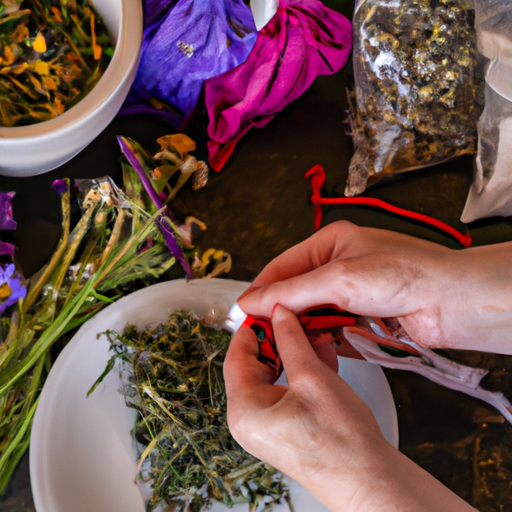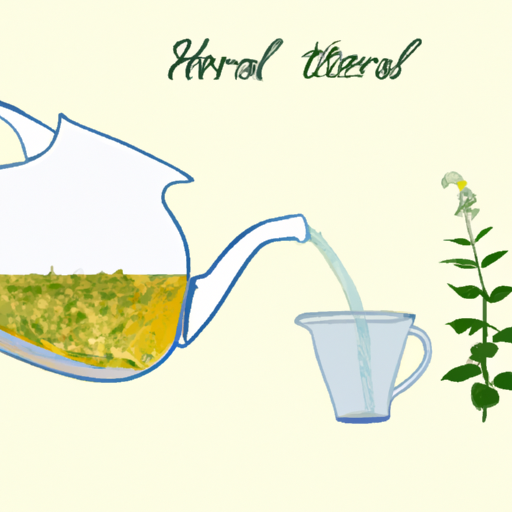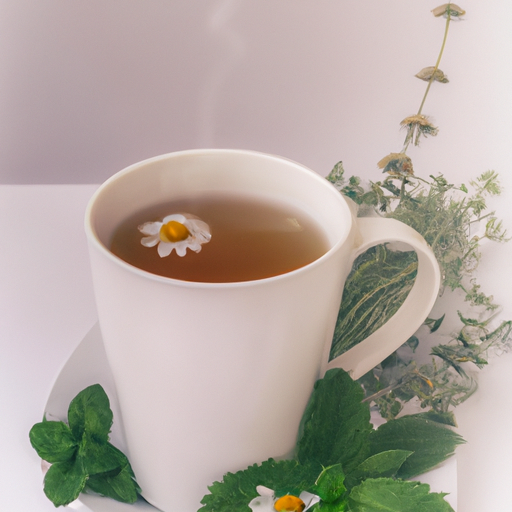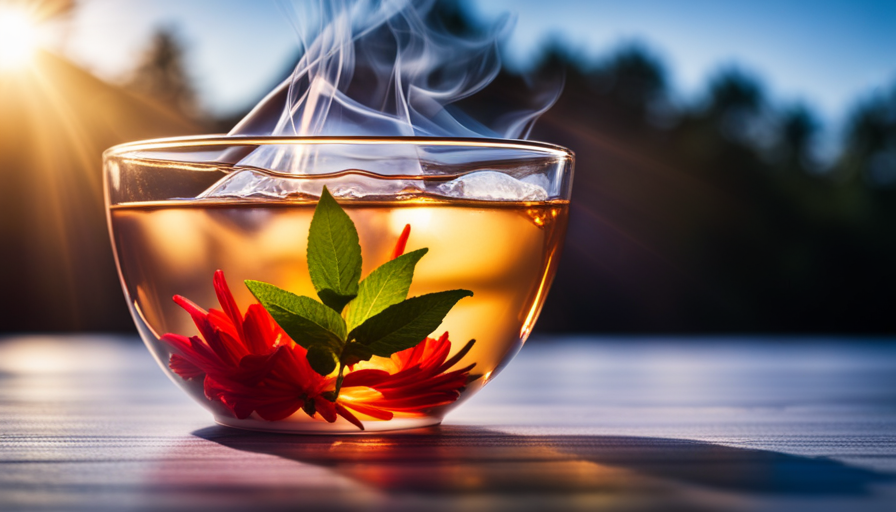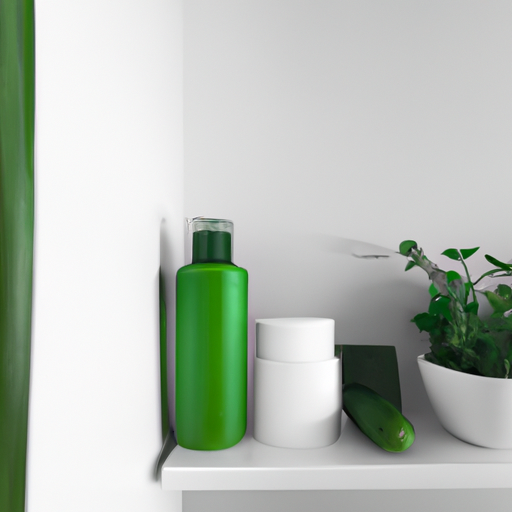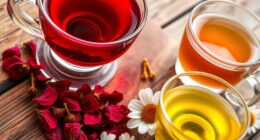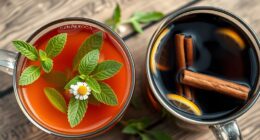Did you know that herbal tea has been cherished for centuries for its calming and therapeutic qualities? In fact, it is believed that over 158 million Americans indulge in tea every day. If you’re a fan of tea like me, you’ll be excited to discover how to create your own herbal tea blends at home.
Not only is it a cost-effective alternative to store-bought options, but it also allows you to customize your tea to suit your tastes and health needs. In this article, I will guide you through the process of making packet herbal tea step by step. From gathering your supplies to steeping the tea, I will provide you with all the information you need to create a delicious and refreshing cup of homemade herbal tea.
So, let’s get started and embark on a journey of aromatic flavors and wellness!
Key Takeaways
- Making homemade herbal tea is cost-effective and customizable.
- Different flavors like chamomile, lavender, and mint can be used.
- Herbal tea has benefits for digestion, immunity, relaxation, and weight loss.
- Experimenting with herb combinations creates unique flavors and health benefits.
Gather Your Supplies
Gather all the supplies you’ll need to make your own packet herbal tea at home, like loose tea leaves, empty tea bags, and a variety of dried herbs and flowers. Infuse flavors by choosing a combination of herbs and flowers that complement each other.
You can experiment with different flavors such as chamomile, lavender, or mint to create your perfect blend. Homemade tea offers various benefits, including the ability to control the ingredients and create a personalized taste. It’s also a great way to relax and unwind after a long day.
Once you’ve gathered all the supplies, it’s time to prepare your herbs and flowers for the tea bags.
Prepare Your Herbs
First, gather all your desired herbs for a refreshing cup of homemade herbal tea, just like plucking flowers from a garden. To ensure the best flavor and health benefits, it’s important to use organic herbs.
There are different methods of drying herbs, such as air drying, oven drying, or using a dehydrator. Choose the method that suits you best and follow the instructions carefully. Air drying is the simplest and most traditional method, allowing the herbs to slowly dry naturally.
Once your herbs are dry, gently crush them to release their aromatic oils and enhance their flavors. Incorporating organic herbs in your homemade tea not only adds a vibrant taste but also provides numerous health benefits.
Now that your herbs are prepared, it’s time to fill your tea bags and enjoy a soothing cup of herbal goodness.
Fill Your Tea Bags
Now that you’ve got your aromatic herbs ready, it’s time to infuse them into convenient tea bags for a hassle-free and delightful tea experience. When it comes to filling your tea bags, you can use alternative materials instead of the traditional paper bags. Muslin cloth, cotton bags, or even empty tea bags that you can fill yourself are all great alternatives.
These materials allow the herbs to expand and release their flavors more effectively. Once you’ve chosen your preferred tea bag material, carefully spoon in your herbal blend. Make sure not to overfill the bags.
To store your homemade herbal tea bags, keep them in an airtight container away from direct sunlight and moisture. This will help preserve their freshness and potency.
Now that your tea bags are ready, let’s move on to the next step of steeping your tea.
Steep Your Tea
Once you’ve filled your chosen tea bags with aromatic herbs, it’s time to steep them and unlock a world of delightful flavors. Steeping techniques can vary depending on the type of herbal tea you’re making. Here are four different approaches to steeping your tea:
-
Traditional Method: Place your tea bag in a cup of hot water and let it steep for 5-7 minutes.
-
Cold Brew Method: Add your tea bag to a pitcher of cold water and refrigerate for 6-8 hours.
-
Sun Tea Method: Fill a jar with water, add your tea bag, and let it steep in the sun for a few hours.
-
Infuser Method: Use a tea infuser to steep your tea bag in hot water for a specific amount of time.
Benefits of herbal tea include soothing the digestive system, boosting immunity, promoting relaxation, and aiding in weight loss.
Now that you know how to steep your tea, let’s move on to customizing your tea with additional ingredients to enhance the flavor.
Customize Your Tea
When customizing your tea, it’s important to consider steeping times for different strengths. The longer you steep the tea, the stronger the flavor will be, so adjust the time according to your preference.
Additionally, adding sweeteners or flavorings can enhance the taste, so feel free to experiment with different options.
Lastly, don’t be afraid to mix and match herbs to create unique flavor combinations that suit your palate.
Steep for Different Lengths of Time for Different Strengths
To achieve varying strengths of flavor, steep the herbal tea for different lengths of time, as the saying goes, ‘Patience is a virtue.’ Experiment with different herbal blends and explore the benefits of long steeping. Here’s a guide to help you achieve the desired strength of your herbal tea:
-
Light flavor: Steep the tea for 2-3 minutes. This’ll give you a mild and subtle taste, perfect for those who prefer a lighter brew.
-
Medium flavor: Steep the tea for 4-5 minutes. This’ll result in a more robust flavor, ideal for those who enjoy a balanced and flavorful cup of tea.
-
Strong flavor: Steep the tea for 6-7 minutes. This’ll give you a bold and intense flavor, great for those who prefer a stronger and more pronounced taste.
By adjusting the steeping time, you can customize the strength of your herbal tea to suit your personal preference.
Now, let’s move on to the next step and add sweeteners or flavorings to taste.
Add Sweeteners or Flavorings to Taste
Enhance the delightful experience of your homemade herbal tea by adding your favorite sweeteners or flavorings to create a taste sensation that will transport you to a cozy café on a rainy day. When it comes to choosing the right sweetener for your herbal tea, it’s important to consider the flavors and health benefits you desire.
Honey is a popular choice, adding a natural sweetness and soothing properties. Stevia is a great option for those watching their sugar intake, as it’s a zero-calorie sweetener derived from plants. If you prefer a more traditional taste, try using sugar or maple syrup.
Now, let’s explore unique flavor combinations for herbal tea. You can experiment with adding fresh fruits like berries or citrus slices, herbs like mint or basil, or even spices like cinnamon or ginger. These additions can elevate the flavor profile and make your tea truly unique.
So go ahead, get creative, and discover your perfect combination of sweeteners and flavorings in your homemade herbal tea.
Experiment with Different Combinations of Herbs
Try mixing and matching various herbs to create your own unique blend of flavors that will leave your taste buds tingling – did you know that there are over 400 different types of herbs that can be used to make delicious and refreshing homemade tea? Exploring the world of herbal tea blends is not only a delightful culinary adventure, but it also offers numerous health benefits. Herbal teas are known for their therapeutic properties, such as soothing digestion, boosting the immune system, and aiding in relaxation. To help you get started on your herbal tea journey, here is a table showcasing some popular herbs and their health benefits:
| Herb | Health Benefits |
|---|---|
| Chamomile | Promotes relaxation and sleep |
| Peppermint | Eases digestive discomfort |
| Ginger | Relieves nausea and inflammation |
| Lavender | Calms the mind and reduces anxiety |
| Hibiscus | Lowers blood pressure and cholesterol |
With so many options available, you can create endless combinations of herbs to suit your taste and health needs. Once you’ve found your perfect blend, you can sit back, relax, and savor the flavors of your homemade herbal tea.
Enjoy Your Homemade Herbal Tea
Savor the comforting warmth and fragrant aroma of your homemade herbal tea. Herbal tea not only provides a delicious and soothing beverage, but it also offers numerous health benefits.
The combination of herbs you choose can have a significant impact on the effects of your tea. For relaxation and stress relief, consider brewing a blend of chamomile, lavender, and lemon balm. These herbs have calming properties that can help to ease tension and promote a sense of tranquility.
Another recipe for relaxation includes passionflower, valerian root, and mint. These herbs work together to promote a restful sleep and reduce anxiety.
Experimenting with different combinations of herbs allows you to customize your tea to suit your individual needs. So sit back, relax, and enjoy the therapeutic benefits of your homemade herbal tea.
Frequently Asked Questions
Can I use any type of tea bag for making packet herbal tea at home?
Sure! You can use any tea bag that suits your taste buds for making packet herbal tea at home. Experiment with different types like chamomile or peppermint, and enjoy the benefits of regular herbal tea consumption.
How long should I steep the tea to get the perfect flavor?
To steep herbal tea for maximum flavor, it is important to follow these tips for brewing the perfect cup. Steep the tea for 5-7 minutes, using boiling water. Adjust the steeping time based on your personal preference for a stronger or milder flavor.
Are there any specific herbs that should not be used for making herbal tea?
Some herbs may have potential side effects when used in herbal tea. It is important to research and consult with a professional before using any herb. Properly storing herbs in a cool, dark place can help maintain their freshness.
Can I reuse the tea bags for a second infusion?
You can definitely reuse tea bags for a second infusion! It’s a great way to maximize the benefits and flavor of your herbal tea. The second infusion may have a milder taste, but it still retains some of the beneficial properties.
What are some common mistakes to avoid while making packet herbal tea at home?
Common mistakes to avoid while making packet herbal tea at home include using water that is too hot or too cold, steeping for too long or too short, and not following the recommended brewing time or instructions.
Conclusion
In conclusion, making your own packet herbal tea at home is a rewarding and customizable experience.
As I sipped on my freshly brewed cup of chamomile tea, I couldn’t help but be reminded of a warm summer day, sitting in a field of flowers, feeling a sense of calm wash over me.
It’s amazing how a simple blend of herbs can create such a powerful and soothing effect. So why not give it a try?
Explore different herbs, experiment with flavors, and create your own little moments of tranquility. Cheers to homemade herbal tea!

